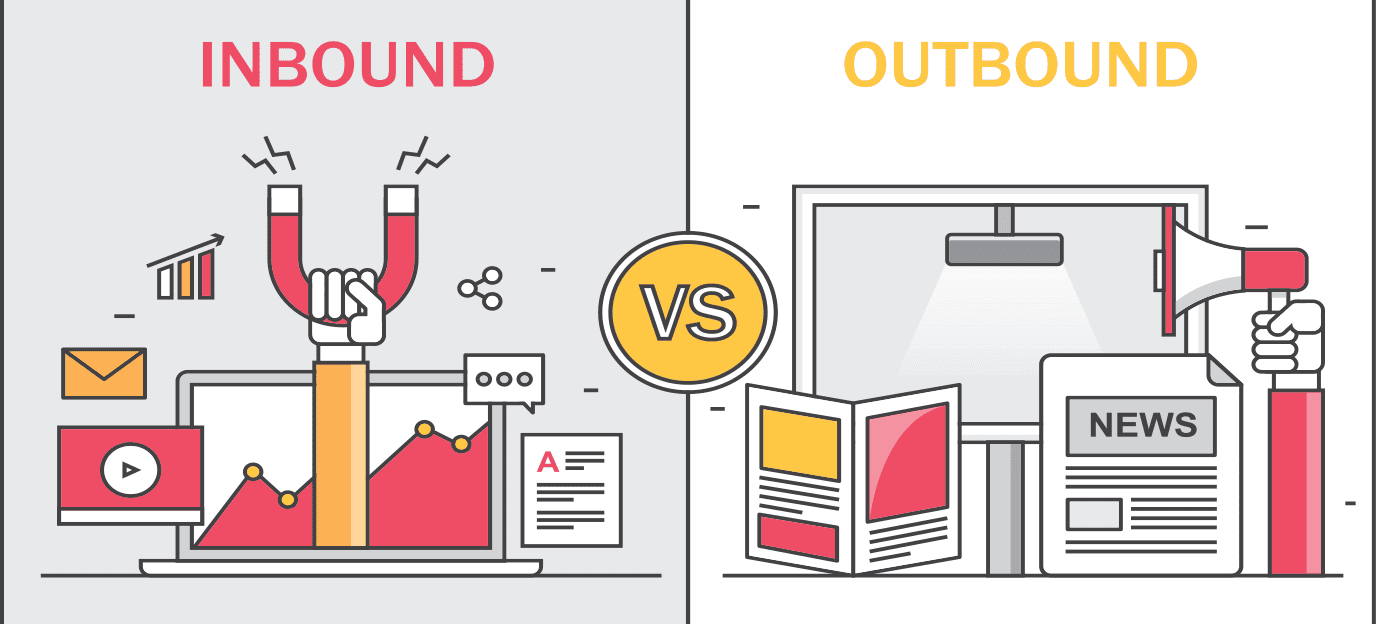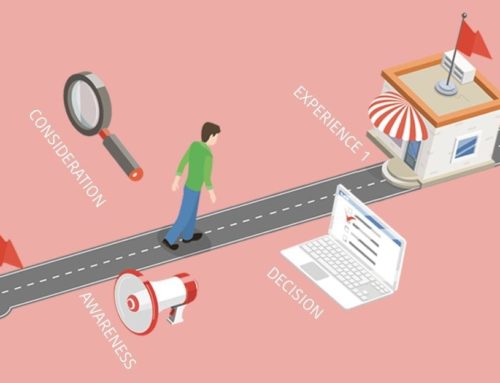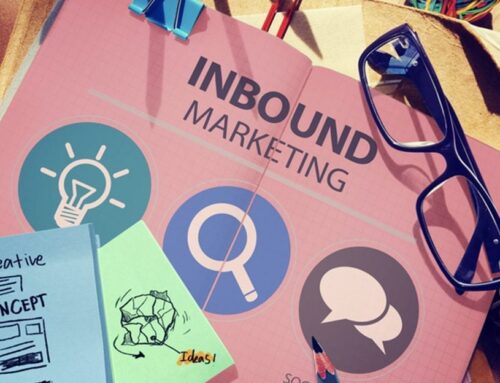Finding the marketing strategy to best grow your business
Businesses looking to expand website traffic know it’s important to keep on top of what’s trending in the marketplace. When it comes to marketing efforts, outbound and inbound marketing are more than buzzwords and trends to watch. Since 2006, when Hubspot coined the term “inbound marketing,” companies have wondered whether to should change their overall marketing strategy.
Even though 75 percent of inbound organizations believe their marketing strategy is effective, every brand is unique. Different situations may require one marketing strategy over the other. Being able to understand and distinguish between outbound and inbound marketing strategies helps you promote your business most effectively.
Outbound Marketing
Outbound marketing has been around for many years; the term is just another way of saying “traditional advertising methods.” Tactics include telemarketing, television and radio commercials, direct mail and outdoor advertising.
These strategies push out a message to consumers with the hope that the target audience will see it and respond accordingly. For some brands, this is still an effective tool. Think about it, if it wasn’t working at all, you wouldn’t see any billboards on the freeway or those famous Super Bowl commercials.
Outbound marketing helps drive interest for brands and helps companies develop more leads. For outbound efforts to work well, messages have to be very broad to reach a large part of the marketplace. Additionally, having some kind of “reward” associated with the message is particularly helpful. Here are some examples:
- A cold call that provides an incentive, such as a coupon.
- Television or radio commercials that offer discounts to the first 10 callers who make a purchase.
- Direct mail with information for a trial service of a product.
- Billboard directing people to a website to enter a contest.
Some of the benefits of using outbound marketing include:
- It’s a great way to get a brand in front of a large number of people to build awareness.
- The results appear quickly, sometimes even immediately.
- Spam rules don’t apply to direct mail; it’s possible to send out a message to prospective customers without needing opt-in permission as you do via email.
Pay-per-click (PPC) is considered an outbound tactic, but it can be useful, especially for gathering data that can be used later for other marketing.
Further, cold calls still work for some businesses. Chip Bell and John Patterson, authors of “Customer Loyalty Guaranteed: Create, Lead and Sustain Remarkable Customer Service,” found that 25 percent of B2B decision makers are actively or passively looking to switch vendors and are open to cold calls. Additionally, research shows 41.2 percent of salespeople say the phone is still the most effective sales tool and 92 percent of all customer interactions happen over the phone, especially if you call between 4 and 5 p.m.
Perhaps the reason a business would most consider outbound marketing is speed. Inbound marketing takes time; it can be 3 to 6 months to develop a relationship. Thus, companies looking to quickly develop more leads can do so with outbound marketing, especially among existing customers.
Inbound Marketing
Proponents of inbound marketing point out that outbound is “old school” and the marketplace is much too saturated with outbound messages to grab the attention of today’s consumers who are much too busy and more savvy.
Traditional commercials interrupt television shows and telemarketing calls interrupt dinner, and most of the time can be seen as overwhelming. Outbound efforts are not as effective as inbound marketing techniques.. In fact, many would say inbound marketing efforts are often welcome. Creating content such as whitepapers and blogs and using other inbound marketing tactics, pull visitors in. This increases brand exposure, fosters trust and creates authority because consumers will return to expert sources that deliver information they need and want.
Content also allows people to engage with brands in a more personal one-on-one way, especially via social media. You no longer have to shout out a general message to anyone who will listen, instead you target the exact customers you want.
That said, no potential client will automatically become a paying customer after reading one blog or seeing one engaging post on social media. Messages have to be regular and consistent over many months. With inbound marketing, you are slowly building a relationship with a consumer who will be a loyal and returning customer.
While outbound marketing tactics such as paid advertising can be costly, organizations that use inbound marketing efforts see a per-lead cost that’s 61 percent less due in part to the fact that content such as infographics, videos or blogs can be repurposed, reused and promoted via social media in a number of different ways. Additionally, when you create content, you can put in keywords that enhance your SEO, allowing your website to be found organically instead of via paid placement.
Develop your strategy
It is important to understand what your business hopes to gain via marketing efforts and create a strategy that incorporates outbound marketing, inbound marketing or a combination of both. For example, you might pay for an ad on social media (outbound) that links to a podcast or e-book (inbound).
Not sure what would work best for your business? This is where T.E. Digital can help. We help organizations better connect their brands with their target audiences. Give us a call. Let’s discuss your goals and develop a marketing strategy that best fits your unique situation.






Leave A Comment